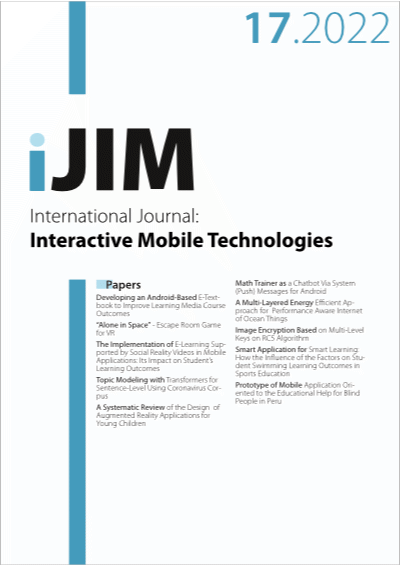Smart Application for Smart Learning: How the Influence of the Factors on Student Swimming Learning Outcomes in Sports Education
DOI:
https://doi.org/10.3991/ijim.v16i17.34365Keywords:
Smart Application, Learning Outcomes, Learning Motivation, Physical Activity, Nutritional Status, V02MaxAbstract
Smart Application is one that can be used to learn swimming for students in sports education. This study aims to reveal and explain the usability of smart swimming applications to explore factors influencing students' swimming learning outcomes in sports education. Data of this study were 300 sports education students that took swimming courses. Statistical analysis was performed using multiple regression analysis with the help of the software Statistical Package for the Social Sciences (SPSS) version 16. Overall, the factors of learning motivation, physical activity, nutritional status, and V02Max have an F-table value of 105.605 > 2.25, while R2 is valued at 58.9%. The results of the t-test revealed that all those factors affecting swimming learning outcomes, with the t-count value are more significant than the t-table at a significance level less than 0.05, which is 0.000. Furthermore, all factors are interrelated and needed to each other to produce good quality student swimming learning outcomes. Therefore, adequate attention and good management are necessary for lecturers in teaching swimming materials to improve students learning quality in sports education.
Downloads
Published
How to Cite
Issue
Section
License
Copyright (c) 2022 Syahrastani, Hendra Hidayat, Anton Komaini, Andri Gemaini, Zulbahri

This work is licensed under a Creative Commons Attribution 4.0 International License.



